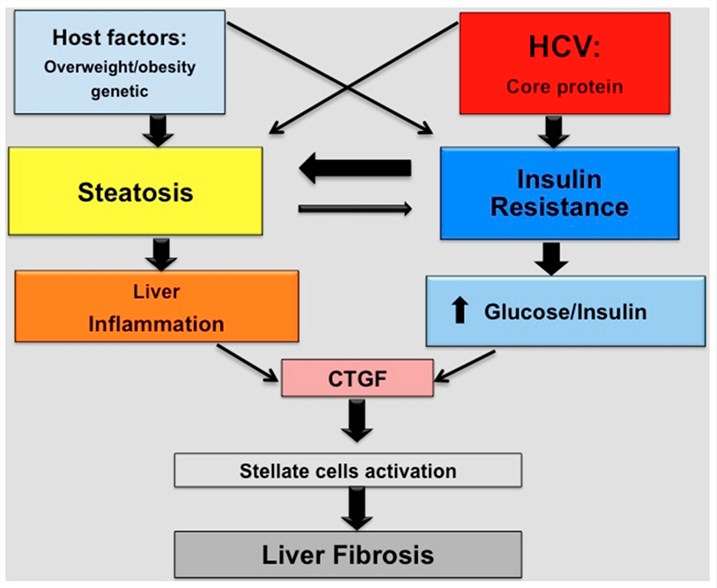NASH Target Development Service for Connective Tissue Growth Factor (CTGF)
Fibrosis is one of the important features in the development of nonalcoholic steatohepatitis (NASH) and is the main cause of cirrhosis and hepatocellular carcinoma. Connective tissue growth factor (CTGF) is an intermediate key molecule involved in the pathogenesis of fibrosing chronic liver diseases, and it is expected to become a candidate target for the treatment of liver fibrosis such as NASH. With the "one-stop" drug development service platform, Creative Biolabs is devoted to providing customers with a range of technical services about NASH.
Introduction of Connective Tissue Growth Factor (CTGF)
Connective tissue growth factor (CTGF), also known as CCN2, is a cysteine-rich extracellular matrix (ECM)-associated heparin-binding protein that belongs to the CCN family. CTGF is involved in a variety of biological processes including cell proliferation, differentiation, adhesion, and angiogenesis, as well as multiple pathologies, such as tumor development and tissue fibrosis. The biological roles of CTGF are considered to be regulatory: I) it binds to specific receptors to initiate signal transduction, and II) it binds to cytokines and mediates their binding to cell surface receptors and initiation of downstream signaling pathways, III) CTGF mediates matrix turnover by binding to ECM proteins and is involved in the regulation of the activity of cytokines and growth factors. CTGF can be strongly induced by transforming growth factor beta (TGF-β) and other growth factors to produce ECM, including collagen, fibronectin, and tenascin, which plays an important role in various fibrotic and desmoplastic diseases, including atherosclerosis, organ fibrosis, fibrotic skin disorders and NASH.
Connective Tissue Growth Factor (CTGF) for NASH
CTGF is a matricellular glycoprotein and central mediator of tissue remodeling and fibrosis. Its levels are elevated in viral hepatitis and NASH liver tissue and it can enhance the activity of TGFβ. Activation of hepatic stellate cells (HSC) by TGFβ is the central process in liver fibrosis and TGFβ strongly stimulates the synthesis of ECM proteins. After activation, HSCs begin to proliferate, transform into myofibroblasts, migrate, contract and cause fibrogenesis. In addition, under the stimulation of TGFβ, the composition and density of the surrounding ECM gradually change, which occurs in an environment containing fibril-forming collagens (particularly collagen type I and II) and fibronectin. This altered ECM further stimulates the fibrotic process. These findings provide a powerful theoretical basis for the application of CTGF antagonists in the treatment of NASH. CTGF antagonists block TGFβ-mediated signal transduction pathways and subsequent CTGF production and thus may serve as a potentially beneficial approach for improving NASH.
 Fig.1 Schematic representation of factors and mechanisms involved in the progression of liver fibrosis in chronic hepatitis C patients. (Adinolfi, 2016)
Fig.1 Schematic representation of factors and mechanisms involved in the progression of liver fibrosis in chronic hepatitis C patients. (Adinolfi, 2016)
Many small molecules are involved in the development of NASH, and their antagonists can effectively alleviate some of the symptoms of NASH and have been developed as therapeutic targets for NASH. Creative Biolabs offers the synthesis and optimization services for a variety of small molecule antagonists to provide new strategies for the treatment of NASH. If you are interested in our services, please feel free to contact us for more information.
Reference
- Adinolfi, L.; et al. NAFLD and NASH in HCV infection: prevalence and significance in hepatic and extrahepatic manifestations. International journal of molecular sciences. 2016, 17(6): 803. Distributed under CC BY 4.0, without modification.
 For Research Use Only.
For Research Use Only.